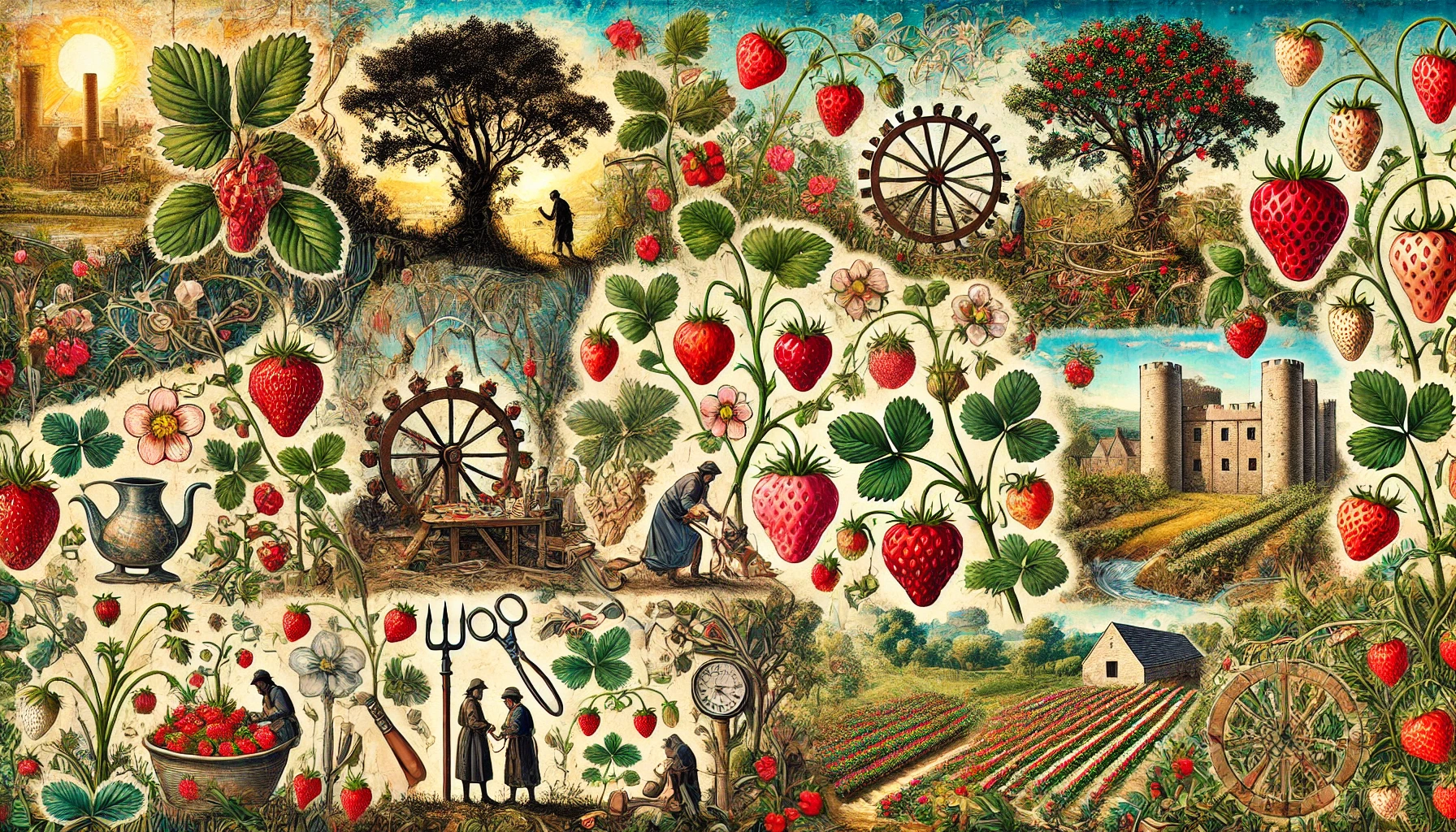The Sweet Journey of Strawberries: A Detailed History
The strawberry, with its luscious red hue and tantalizing sweetness, has captivated human taste buds for centuries. Its journey through history is as rich and diverse as its flavor. From its humble beginnings as a wild berry to its cultivation in gardens around the world, the strawberry’s story is one of adaptation, innovation, and cultural significance.
Origins:
The history of the strawberry dates back thousands of years, with evidence suggesting that wild strawberries were consumed by early humans in Europe and Asia. These tiny, tart berries grew abundantly in forests and meadows, providing a seasonal treat for foragers. Ancient Romans and Greeks were aware of wild strawberries, although they were smaller and less sweet compared to the cultivated varieties we enjoy today.
Cultivation in Ancient Times:
The cultivation of strawberries likely began in Europe during the Renaissance period. Early gardeners selectively bred wild strawberries to enhance their size, flavor, and yield. By the 17th century, European horticulturists were cultivating strawberries in gardens for their medicinal properties as well as their taste. It was believed that strawberries could treat a variety of ailments, from digestive issues to skin conditions.
Introduction to the Americas:
The arrival of European settlers in the Americas in the 17th century brought strawberries to the New World. Native American tribes were already familiar with wild strawberries, but they embraced the cultivated varieties introduced by the colonists. The Native Americans quickly adopted strawberries into their diets and incorporated them into traditional dishes.
Strawberries in Colonial America:
In colonial America, strawberries gained popularity as a garden fruit and were grown in both private gardens and public spaces. Early American settlers appreciated strawberries for their flavor and nutritional value. They used strawberries in jams, preserves, pies, and other desserts, laying the foundation for the strawberry-centric cuisine that would become synonymous with American summers.
Commercial Cultivation:
The 19th century saw significant advancements in strawberry cultivation, thanks to developments in agricultural technology and transportation. Growers began experimenting with new varieties and cultivation techniques to improve yield and extend the growing season. Railroads and refrigeration allowed strawberries to be shipped long distances, making them more widely available and commercially viable.
Modern Cultivation and Varieties:
Today, strawberries are cultivated on every continent except Antarctica, with major producers including the United States, Mexico, Spain, and China. Modern strawberry varieties have been bred for their size, sweetness, and disease resistance, with hundreds of cultivars available to growers. From the classic ‘Hood’ variety to newer hybrids like ‘Albion’ and ‘Fronteras,’ strawberry enthusiasts have a wide array of options to choose from.
Cultural Significance:
Beyond their culinary appeal, strawberries hold a special place in popular culture and symbolism. They are often associated with romance and indulgence, making them a popular choice for Valentine’s Day treats and wedding desserts. The image of a ripe strawberry is also commonly used in art, literature, and advertising to evoke feelings of freshness, vitality, and abundance.
Health Benefits:
Strawberries are not only delicious but also nutritious, packed with vitamins, antioxidants, and fiber. They are low in calories and high in essential nutrients, making them a popular choice for health-conscious consumers. Studies have shown that regular consumption of strawberries may have numerous health benefits, including improved heart health, better blood sugar control, and reduced inflammation.
Conclusion:
The history of the strawberry is a testament to human ingenuity, as well as our enduring love affair with food. From its humble origins as a wild berry to its status as a global culinary sensation, the strawberry has journeyed far and wide, leaving a trail of sweetness in its wake. Whether enjoyed fresh from the vine or incorporated into a decadent dessert, the strawberry continues to delight and inspire people around the world.



